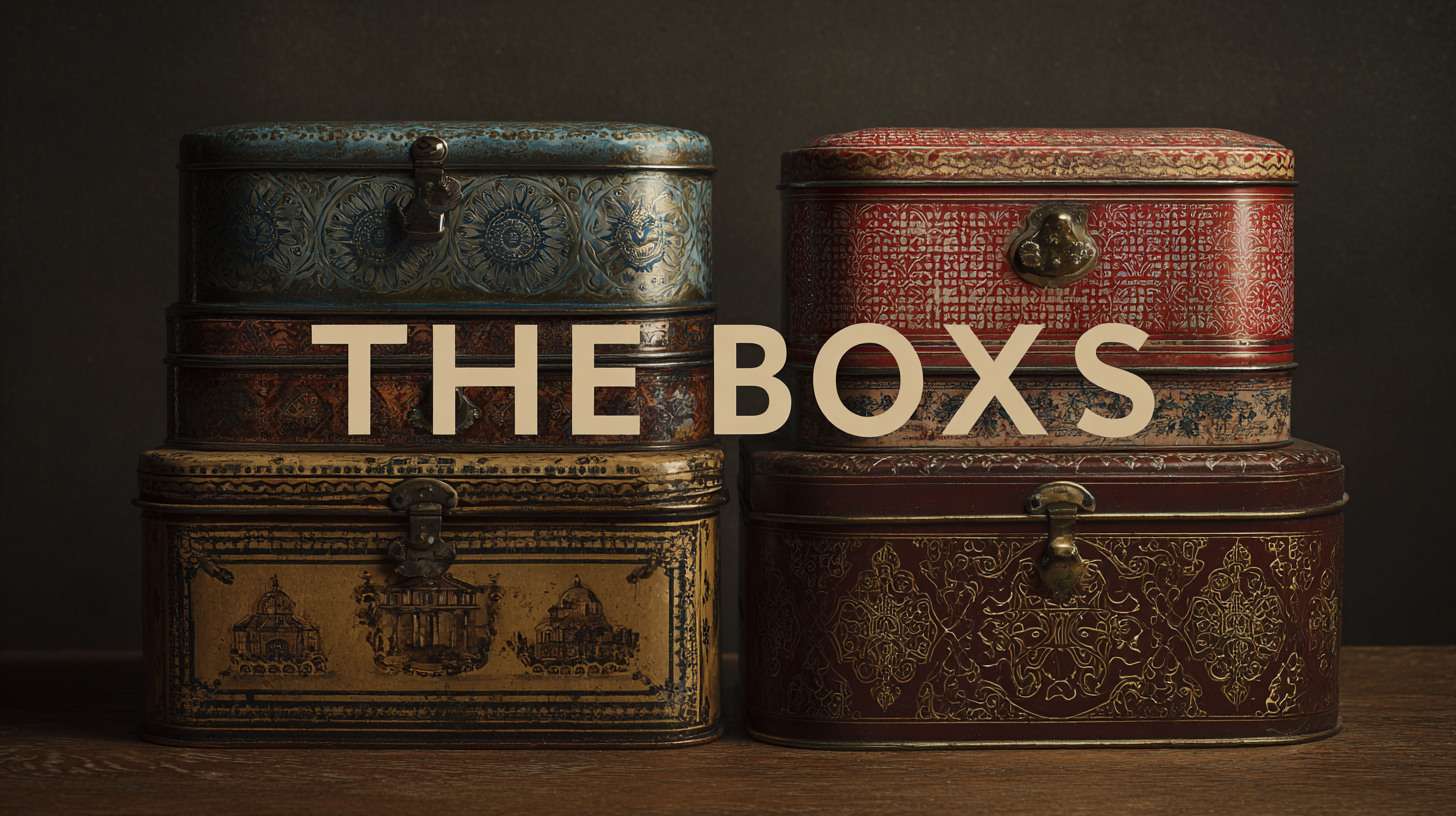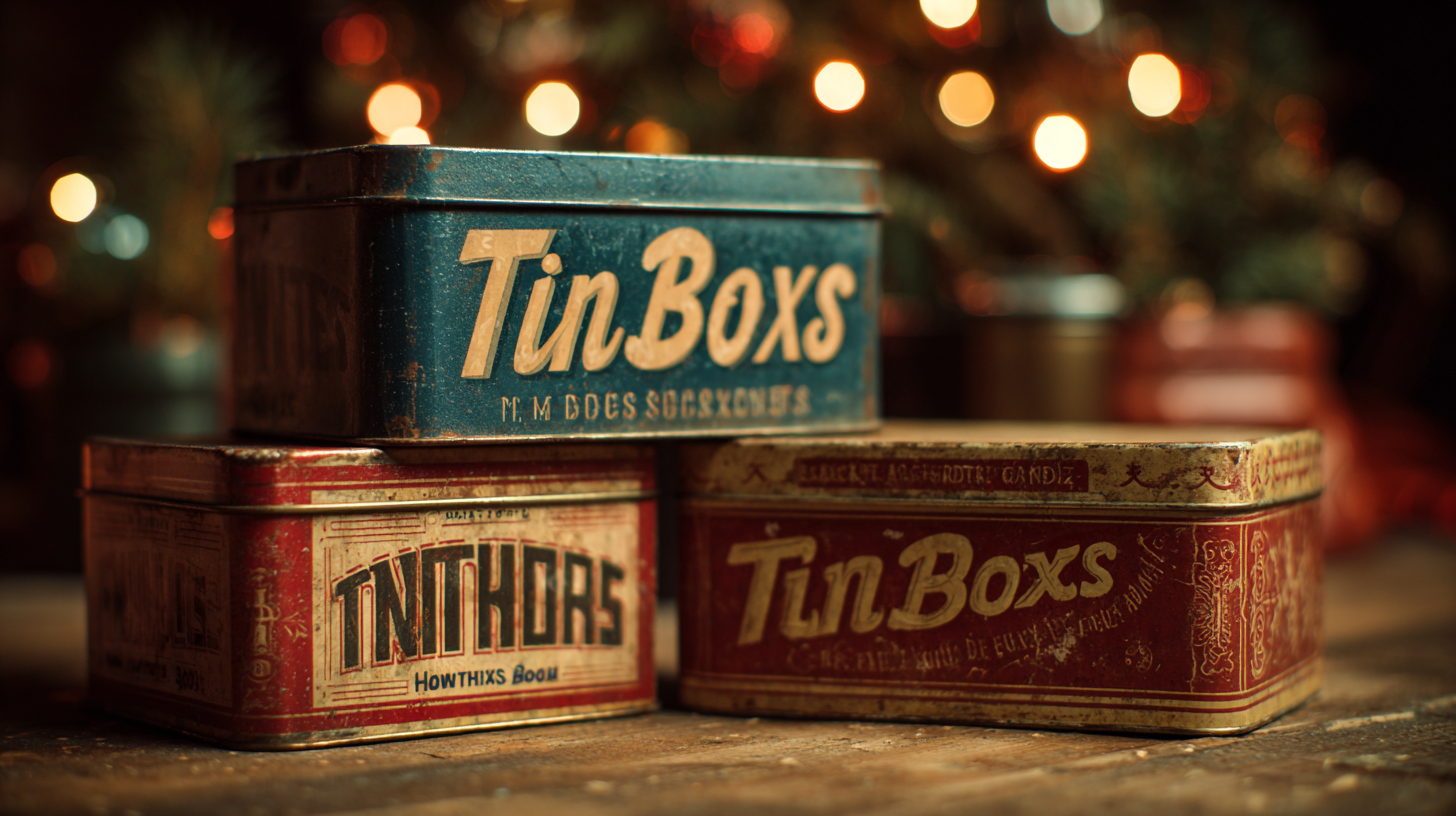 +817089618688
+817089618688
Free Standard Samples can be provided for you to check the quality.
In today's competitive market, sourcing the best tin boxes globally has become an essential strategy for businesses looking to stand out. As versatile and eco-friendly packaging solutions, tin boxes not only serve functional purposes but also enhance brand appeal through their unique aesthetics. With the rise of e-commerce and sustainable packaging trends, it's vital to understand the most effective strategies for sourcing these coveted items. This blog will unveil the top tactics that can help you identify and procure high-quality tin boxes, ensuring that your product stands out on the shelves while meeting the evolving demands of environmentally conscious consumers.

From leveraging global supplier networks to evaluating the latest design trends, our insights will empower you to make informed decisions that can significantly impact your brand's success in the marketplace.
When sourcing tin boxes globally, several key factors must be considered to ensure a successful procurement process. First and foremost, understanding the supply chain dynamics of different regions is crucial. This includes researching potential suppliers, their production capabilities, and lead times. Countries known for quality manufacturing—such as China, India, and Vietnam—should be evaluated for their reliability and industry reputation. Establishing solid communication channels with suppliers also helps in negotiating terms and clarifying expectations, ultimately leading to a smoother transaction.

Another important factor is compliance with international quality and safety standards. Tin boxes often serve various purposes, from packaging food products to decorative items. Ensuring that the sourced products adhere to relevant regulations in your target market is essential. Conducting due diligence through audits and quality assessments can mitigate risks associated with product recalls or legal issues. Additionally, considering the environmental impact of manufacturing processes is becoming increasingly vital, with many consumers now favoring eco-friendly products. By focusing on these key areas when sourcing tin boxes, businesses can enhance their product offerings and maintain consumer trust.
When sourcing tin boxes globally, it’s crucial to engage potential suppliers with a set of essential questions that can help you evaluate their reliability and capability. Start by asking about their experience in the tin box manufacturing industry. Understanding how long they have been in business and the types of tin boxes they produce can give you insight into their expertise and whether they can meet your specific needs.

Next, inquire about their production capabilities and quality control measures. Questions such as "What materials do you use for your tin boxes?" and "How do you ensure quality throughout the production process?" will shed light on their commitment to quality and safety standards. It’s also important to ask about their lead times and minimum order quantities, as these factors can significantly impact your supply chain and inventory management.
Lastly, don’t overlook the importance of transparency in communication. Ask potential suppliers about their policies regarding pricing, shipping, and return procedures. Establishing clear communication channels and understanding their customer service approach can help you build a strong, reliable partnership that enhances your sourcing strategy for the best tin boxes available.
When it comes to sourcing high-quality tin boxes, it’s crucial to tap into the right global markets. Countries renowned for their tin production, particularly in Southeast Asia and parts of South America, offer robust supply chains and advanced manufacturing capabilities. For instance, Malaysia and Indonesia have established themselves as leaders in refined tin production, largely supporting industries that require durable and aesthetically pleasing tin boxes.
Tip 1: Research the production capacities and technological advancements in these regions. Understanding local manufacturing processes can help ensure that you partner with producers who prioritize quality and sustainability in their offerings.
Moreover, with the recent surge in global refined tin production, which increased by 11% last year, the market is ripe for exploration. Countries that effectively utilize new technologies, such as additive manufacturing, are particularly well-positioned and can provide innovative solutions for custom tin box designs.
Tip 2: Engage with manufacturers who are embracing modern techniques to enhance their product line. You'll not only benefit from superior quality but also from companies committed to sustainable practices in managing their resources.
Thus, as you explore the best markets for tin box production, keep an eye out for these strategic advantages and you will undoubtedly secure the best products for your needs.
When sourcing tin boxes globally, ensuring compliance with safety standards is paramount. Businesses must navigate a complex landscape where regulations vary across regions. Recent investigations into unsafe consumer products have highlighted the dire consequences of non-compliance, prompting a call for stricter safety laws. Companies should adopt best practices such as thorough testing for hazardous materials and adherence to international compliance standards. This proactive approach not only safeguards consumers but also protects manufacturers from liability and reputation damage.
Additionally, integrating technology for compliance tracking can enhance safety measures. For example, regulatory databases can assist businesses in staying informed about the latest safety regulations and practices within the industry. By leveraging data analytics and artificial intelligence, companies can streamline the compliance process, ensuring that their products meet or exceed safety expectations. Sustainable sourcing of materials and transparent supply chains are also critical factors in mitigating potential risks associated with tin boxes, ensuring they align with both consumer safety and environmental standards.
This chart illustrates the compliance and safety standards adherence percentage of tin boxes sourced from different regions around the world.
When it comes to negotiating prices with tin box manufacturers, understanding the market landscape is key. According to the Global Packaging Report 2023, the tin box market is projected to grow at a CAGR of 5.2%, reflecting increasing demand in sectors such as food and beverage, cosmetics, and pharmaceuticals. With such growth on the horizon, companies must hone their negotiation strategies to secure the best deals.
One effective strategy is to leverage bulk purchasing agreements. Research indicates that negotiating for volume can lead to significant cost reductions, often up to 15-20%, depending on the manufacturer. Additionally, being aware of seasonal fluctuations can enhance your negotiating position. For instance, many manufacturers may offer lower prices during off-peak production periods to maintain steady revenue. Coupled with thorough market research that reveals competitors' pricing and production capabilities, businesses can approach negotiations well-prepared, ensuring they achieve favorable pricing while establishing long-term partnerships with their suppliers.
| Country | Average Price per Box (USD) | Minimum Order Quantity | Lead Time (Days) | Average Quality Rating (1-5) | Payment Terms |
|---|---|---|---|---|---|
| China | 0.50 | 1000 | 30 | 4.2 | 30% deposit, 70% before shipping |
| Vietnam | 0.60 | 500 | 25 | 4.0 | 50% upfront, 50% on delivery |
| India | 0.55 | 700 | 20 | 4.1 | Advance payment, T/T |
| USA | 1.00 | 300 | 15 | 4.5 | Net 30 days |
| Germany | 0.80 | 200 | 20 | 4.3 | 30% deposit, 70% before dispatch |
